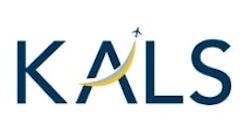Boeing President and CEO Dave Calhoun during the annual meeting of shareholders on May 17 discussed near-term and long-term actions the company is taking to strengthen safety, quality and company culture.
Looking back: 737 MAX fatal crashes
After 346 people died in two fatal crashes involving a 737 MAX, specifically Lion Air Flight 610 on Oct. 29, 2018 and Ethiopian Airlines Flight 302 March 10, 2019, Calhoun said, “We made very intentional changes to reshape our company and our focus on safety.”
These changes included the board of directors, the leadership team, organizational realignment, and “an absolute commitment to transparency from the top to the bottom of the company,” he said.
“Our employees remember the lessons learned from those accidents, they apply them in their daily work and they will continue to remember them in the decades to come.
“At the beginning of 2020, we had 450 grounded, 737 MAXs in inventory and 385 customer airplanes grounded and waiting to return to service.
"Two months later, the COVID pandemic took hold in the U.S. in the Puget Sound flight between two of our largest factories and as we all know, the pandemic wreaked havoc on our lives, businesses, supply chain and the world at large. Aviation took a direct hit.
“Facing these challenges, priority one for Boeing was to work with the FAA and global regulators to certify the modified 737 MAX design and safely return the airplane to service. Our next priority was ensuring all the lessons learned from the original accidents were meaningfully addressed by modifying our development processes, our assumptions and our design practices.”
Safety management
Calhoun continued describing changes inside the company:
“We brought together more than 50,000 engineering teammates into a single integrated organization to focus on Engineering Excellence, including transparency, collaboration and accountability across all engineering designs and decisions. We established our first Chief Aerospace Safety Officer and introduced the Safety Management System across our company based on the FAA's established protocols with the airlines.
“Nearly every second of every day, a Boeing airplane takes off and lands somewhere around the world. Our Safety Management System is increasingly tuned in to learn from our airline customers and the airplanes themselves so we can continuously improve the maintenance of current airplanes and the development of future airplanes.
“We appreciate the work of the FAA’s Aircraft Certification, Safety and Accountability Expert Review (ACSA) panel and their recommendations concerning our Safety Management System and our development processes.”
MAX production
Today, Calhoun says fewer than 100 MAXs built prior to 2023 remain to be delivered of the original 450 grounded airplanes in inventory. And, he said, “all of our customers have returned their MAXs to service.
“Over the last few years, we've taken care not to stress our production system and we've never hesitated to slow down or halt production or to stop deliveries to take the time needed to get things right. In fact, we stopped delivering 787s for over a year to ensure that each conformed to our exacting specifications prior to delivery."
Alaska Airlines Flight 1282 – The door plug incident
While the work that Boeing began after the first MAX accidents continues, Calhoun said, "the Alaska Airlines Flight 1282 accident was a watershed moment for us and a stark reminder that much more work remains.
“We took responsibility and we committed to transparency and then, most importantly, action. And we continue to fully cooperate with all regulators by their respective investigations, while supporting our customers, our suppliers and our partners. This increased scrutiny, whether it comes from us, from our regulator or from third parties, will make us better. It's that simple.
“We've been engaged with the FAA and immediately went to work on our 90-day quality action plan. We've completed our 30-and 60-day FAA reviews and will meet with the FAA in a couple of weeks to present our final plan. We anticipate the FAA will take whatever time is necessary to review that plan and hold us accountable to the various control parameters that are put in place as we move forward. This is more of a beginning than it is an end.
“More broadly, we are taking immediate and comprehensive action to strengthen quality at Boeing and within our supply chain. We instituted additional quality controls and inspections at Boeing and specifically at our fuselage supplier in response to everything we learned from the Alaska Airlines accident.
“We issued bulletins to all of our suppliers to strengthen the focus on conformance and reducing the risk of quality escapes. We opened our factories to 737 operators for additional direct oversight, and we appointed an expert quality advisor to conduct a comprehensive and independent review of our commercial airplane quality management system, including the supply chain, and they will remain with us for as long as it takes to implement their recommendation.”
Continuous improvement
Calhoun said other areas for continuous improvement include "improved training, better tooling, simpler work instructions and more robust employee listening, and maybe above all, living our safety culture each and every day.
“We proactively seek the inputs of our people, as demonstrated by the active participation and suggestions of our employees during stand downs following the accident and their engagement in various channels for speaking up that are accessible to all of our people. And our policies strictly prohibit retaliation of any kind.
“A strong culture listens to its people; it listens to its critics; it listens to its customers; and it acts on the feedback. This is the Boeing culture we have been working hard to build.
“We are using this period, as difficult as it is, to deliberately slow the system, stabilize the supply chain, fortify our factory operations and position Boeing to deliver with predictability and quality that our customers demand for the long term.
“As these efforts begin to take hold, we're seeing early signs of more predictable, more stable and efficient factory operations and expect this will continue to improve throughout the year. There's a lot of work in front of us, but we remain fully confident in our future. While this effort is slowing our recovery timing, we are starting to see proof points that give us confidence in our future. And we remain committed to our vision for a healthy, stable and predictable Boeing in the 2025-2026 timeframe.”
Aircraft deliveries by year-end
By the end of this year, Calhoun says, “we expect to have largely delivered our 737 MAX and 787 inventory, effectively shutting down two large shadow factories and giving us capacity to put more of our most experienced mechanics back on the assembly line to teach and support our teammates.
“Our commercial business will be more stable. Our supply chain will be more synchronized, and we will have progressed on our commercial development programs, including the MAX -7 and the -10 and the 777X.
“We expect our defense business will be well on its way to more historical levels of performance, with progress made on our fixed-price development programs. And our services team will continue to deliver exceptional results for our customers day in and day out.
"Most importantly, we will have embedded all of the important lessons that we've learned this year. We know that when we execute and deliver to our highest standards, our products and services perform exceptionally well for our customers – and demand remains strong."
High demand, increased investments
With demand high, Calhoun said, "we continue to increase our investments in our people and in our factories to ensure we're able to meet our customers’ needs.
"Since 2019, we've grown our engineering workforce by approximately 10%. Our manufacturing team by 11% and our quality staff by 25%. And all three are now exceeding pre-pandemic staffing levels when production rates were significantly higher.
"We continue to prepare for the development of future airplanes, research and development spending, as well as our factory investment was nearly $5 billion in 2023, and we're increasing these investments across the board in 2024. Our mission is to mature the essential technologies that will enable safe and sustainable flight in the years ahead.
"When it comes to the safety of Boeing's products and services, every decision and every action matters. The backbone of our success is – and always has been – our people. Their passion, their pride, their relentless pursuit of excellence and innovation – even in times of extreme adversity – inspires me every single day. Simply put, Boeing is home to some of the best and brightest minds in the world. We will measure our progress one airplane at a time."






